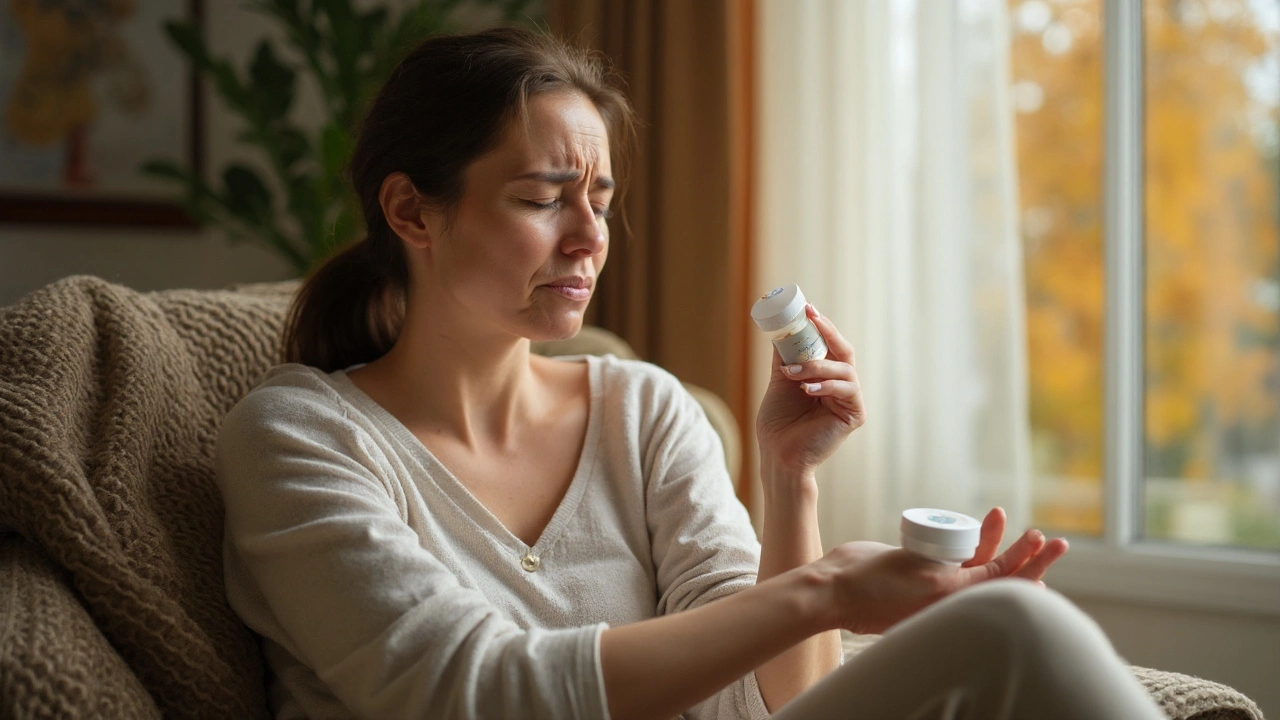Fibromyalgia Skin Symptoms: What They Look Like and How to Manage Them
Ever notice itchy patches, rashes, or a feeling of “tight skin” while dealing with fibromyalgia? You’re not alone. Many people with fibromyalgia report skin problems that add extra discomfort to an already tough condition. Understanding why these skin issues appear can help you pick the right tricks and treatments.
Why Does Fibromyalgia Affect Your Skin?
The exact cause isn’t crystal clear, but researchers think it’s a mix of nerve irritation, inflammation, and a nervous system that’s constantly “on edge.” When nerves misfire, they can send strange signals that make skin feel numb, tingly, or painful. Hormonal shifts and stress, both common in fibromyalgia, also play a role by making the skin more reactive.
Common Skin Complaints and Quick Fixes
Itching and rashes – These often show up as red, flaky patches that look like eczema. A gentle, fragrance‑free moisturizer applied right after a shower can calm the urge to scratch. Look for products with colloidal oatmeal or ceramides.
Tight or “rubbery” feeling – Some folks describe their skin as stretched tight, especially on the arms and legs. Light stretching, warm showers, and using a humidifier at night can keep the skin supple.
Painful nodules or “fibro‑tendinous” bumps – Small, tender lumps under the skin may appear where muscles are overused. Over‑the‑counter NSAIDs like ibuprofen can help, but talk to your doctor about prescription options if pain persists.
Dry, cracked skin – Fibromyalgia can interfere with sleep, leading to less skin repair time. Drinking enough water, applying thick creams (think petroleum‑based ointments) before bed, and avoiding hot, long baths can reduce cracking.
Besides topical care, some oral supplements show promise. Omega‑3 fish oil, vitamin D, and magnesium can support skin health and reduce inflammation. Always check with a healthcare professional before adding new pills.
If you’re on medication for fibromyalgia, check side‑effects. Drugs like certain antidepressants or anticonvulsants sometimes cause photosensitivity or rash. A quick chat with your prescriber can reveal if a dose change or alternative drug is better for your skin.
Stress management is a hidden but powerful tool. Techniques like deep‑breathing, short walks, or guided meditation can lower the nervous system’s “fight‑or‑flight” mode, which in turn eases skin itching and flare‑ups.
When should you see a doctor? If a rash spreads quickly, is painful, or looks infected (red, swollen, pus), get professional help. Same goes for persistent skin pain that doesn’t improve with OTC remedies.
In short, skin symptoms are a real piece of the fibromyalgia puzzle, but they don’t have to control your day. By combining gentle skin care, smart supplements, stress relief, and medical guidance, you can keep your skin comfortable and focus on the things that matter.
Got a favorite skin‑soothing tip? Share it in the comments or with your support group—someone else might need that exact advice right now.
Explore why fibromyalgia can cause rashes, itching and heightened skin sensitivity, understand the underlying mechanisms and learn practical ways to soothe and manage these symptoms.
